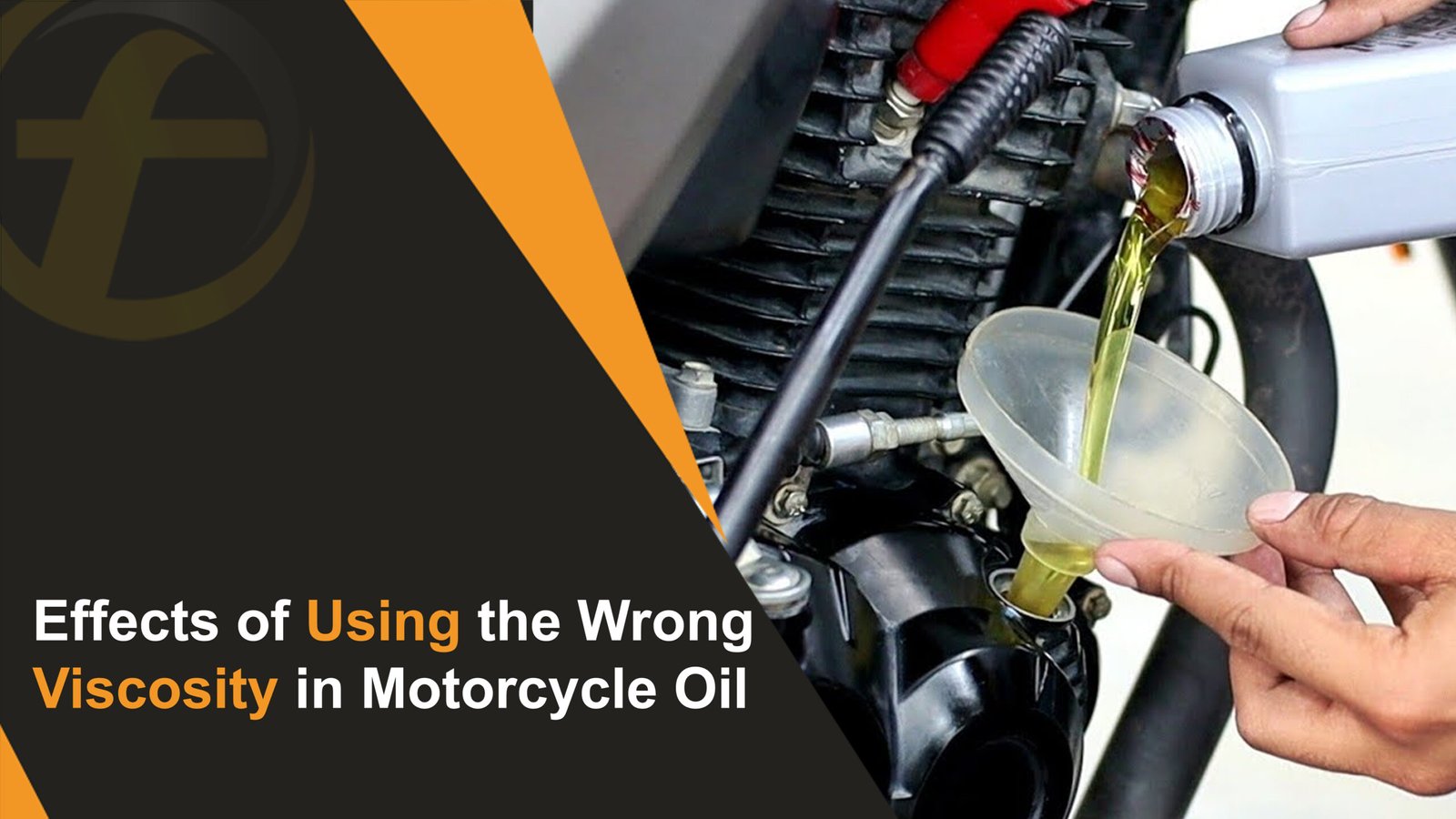
Your bike isn’t just a way to get around – it’s something you enjoy and take care of. It helps you avoid traffic, feel the excitement of the road, and look awesome while doing it. To keep your bike in the best shape, one simple thing you can do is pick the right engine oil.
Engine oil is super important because it helps your bike’s engine stay cool, protects it from damage, and makes it run smoothly. Using the right oil is an easy way to make sure your bike stays in great condition.
What are Viscosity and SAE Grades?
Motorcycle engine oils have a label like 10W-40 that tells you how thick or thin the oil is. These labels follow a system made by the Society of Automotive Engineers (SAE).
What is Viscosity?
Viscosity means how thick the oil is and how easily it flows.
- Thicker Oil (high viscosity): Flows slower.
- Thinner Oil (low viscosity): Flows faster.
Oil helps protect engine parts by creating a slippery layer between them so they don’t rub together. Like syrup or honey, oil gets thinner when it gets hot.
What Does 10W-40 Mean?
Let’s break it down:
- 10W: How thick the oil is when it’s cold (the “W” stands for winter).
- 40: How thick the oil is when it’s hot (normal engine temperature).
The bigger the number, the thicker the oil. For example, 10W-50 is thicker than 10W-30 when the engine is hot.
- Thinner oil: Works better in cold weather.
- Thicker oil: Works better in hot weather.
Why Using the Right Oil Matters
Using the wrong oil can cause problems:
- If the oil is too thin, It won’t stick to engine parts properly, which can cause more friction, heat, and wear.
- If the oil is too thick, It might not reach all the important parts of the engine, which can also cause wear and tear.
Always use the oil grade your motorcycle’s manual recommends to keep it running safely and smoothly.
What About Performance?
Thinner oil makes your engine work better because it flows faster. But this can also wear out the engine faster. Instead, use the right oil grade made for your bike. It reduces friction, keeps your engine safe, and helps it run at its best!
Types of Motorcycle Engine Oil
There are three main kinds of motorcycle engine oil. Each one is made a little differently and works best for certain engines.
Mineral Oil
Mineral oil is made from natural crude oil that’s cleaned up to remove dirt and impurities. This is the cheapest type of oil, but it moves slower through the engine, which can damage performance and use more fuel. It also needs to be replaced more often and doesn’t handle extreme heat or cold very well.
Older bikes are often built to use mineral oil, so it’s a good choice for them.
Semi-Synthetic Oil
Semi-synthetic oil is a mix of mineral oil and synthetic oil. It’s a good middle option because it costs less than full synthetic oil but still works better than mineral oil. It protects the engine and works well even in colder weather.
Full Synthetic Oil
Full synthetic oil is the best option for most motorcycles. It’s made in a lab to keep your engine cool, save fuel, and reduce wear and tear. This type of oil is great for newer bikes and engines that are over 200cc.
Even though it costs the most, synthetic oil lasts longer, so you don’t have to change it as often. It’s worth it to keep your bike in top shape!
Motorcycle Oil for Different Engines
Motorcycles and scooters have two main types of engines: two-stroke and four-stroke. These names explain how many moves (or strokes) the piston takes to complete a cycle.
Two-Stroke Engine Oil
Two-stroke engines are cheaper to run but can be noisier and use more fuel. They are usually found in smaller bikes like scooters and mopeds. If your bike has a two-stroke engine, you need 2T motorcycle oil.
Four-Stroke Engine Oil
Four-stroke engines are used in most modern motorcycles. They are more powerful, use less fuel, and make less pollution than two-stroke engines. Unlike two-stroke engines, they don’t burn oil with the fuel, so they need a special oil called 4T motorcycle oil.
Why Viscosity is Important
Viscosity means how thick or thin the oil is and how well it moves through the engine.
- Oil needs to be thick enough to protect the engine parts but not so thick that it slows things down.
- Monograde Oil: Works best in one type of weather.
- Multigrade Oil: Works in both hot and cold weather, so it’s better for most bikes.
Every engine needs a certain kind of oil. Check your bike’s manual to find the best oil to keep it running smoothly!
Problems with Using the Wrong Engine Oil
Hard to Start in Cold Weather
If the oil is too thick, it gets even thicker in cold weather. This makes it hard for the oil to move through the engine, which can make it hard to start your car. You might also hear weird engine noises once the car is running.
Oil Leaks
Older vehicles or vehicles with a lot of miles usually use mineral oil. If you put synthetic oil in them, they might leak. This is because synthetic oil flows differently and can slip through tiny cracks or gaps in the engine.
Lower Gas Mileage
Thick oil makes the engine work harder because it slows down the moving parts inside. This means the vehicle uses more gas to keep running, which costs you more money.
How to Fix It
Using the wrong oil for too long can damage your engine and make it less reliable. But if you act quickly, you can avoid big problems.
- If your vehicle is hard to start, has leaks, or uses more gas, get it checked.
- Replace the wrong oil with the right one for your car.
Fixing it early can save your engine and keep your car running better!
Bottom Line
Choosing the right engine oil is an important part of keeping your bike running smoothly and safely. Using the wrong oil can cause problems like poor performance, using more fuel, or even engine damage. By picking the right oil for your bike, you help it run at its best for a long time.
For the best care, choose Fubex Motorcycle Engine Oil. It’s made to work well with different types of bike engines and will keep your bike running smoothly, no matter the weather. Keep your bike in top shape with Fubex!
FAQs
Q1: What does the viscosity rating of motorcycle engine oil mean?
Ans: Motor oil grades show how thick or thin the oil is. Viscosity describes how easily the oil flows. High viscosity means thick oil that flows slowly, while low viscosity means thin oil that flows easily.
Q2: Why is oil viscosity important?
Ans: Viscosity helps the oil create a protective layer that reduces friction and wear. When it’s hot or under heavy load, the oil gets thicker to protect the engine better.

Editor-at-Large
A passionate writer in the lubricant industry, Awais Iqbal has been covering oils, greases, and industrial fluids since the start of his career. At 25, he’s already written for blogs, catalogs, and brand guides across the UAE. Awais’s insights help companies connect with their audience, and his clear, helpful writing style is trusted by brands in the region.


